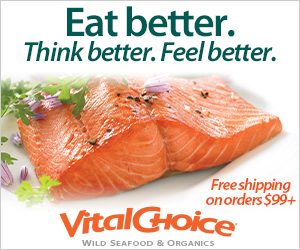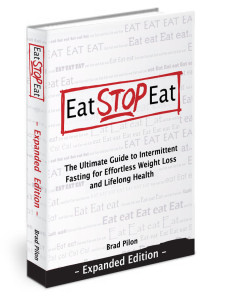- Posted on February 4, 2015
- in Clean Nutrition
Why You Need To Supplement Essential Fatty Acids
By Melanie Christner, CNP for GreenMedInfo.com
As a Nutritional Therapy practitioner, I’ve chosen to focus primarily on the GAPS™ Protocol, in my work with mothers and children. From my own experiences and those of my clients, I believe it to be one of the most powerful and nourishing protocols available, especially as it combines diet, supplementation and detoxification. Even though it is my primary focus, there is also room for adaptation (as you may have read in my article on histamine intolerance) and it fits with my conviction that we are all bio-individuals. There are no two beings exactly alike in their nutritional needs and bio-chemical make-up. Holding that thought, however, there are some basic supplements that I (and Dr. Natasha Campbell-McBride, creator of the GAPS™ Protocol) have found to be of help to almost everyone:
- Therapeutic strength probiotics
- High quality cod liver oil
- Essential fatty acids in the form of fish oil & nut/seed blends
- Digestive supplements (as needed)
Below are the reasons why you need to supplement essential fatty acids.
We’ll Cover The Following Topics in This Article:
- Facts to know about fatty acids
- What they are
- What happens when you are deficient
- What do fatty acids do in the body?
- How mental health is affected by fatty acids
- Best food sources and cooking methods
- What to look for as indication for supplementing EFA’s
- Dosages recommended on the GAPS™Protocol
- The brands I would recommend using
We’ll begin with some quick facts about fatty acids:
1. Facts to Know About Fatty Acids
- Omega-3 fats come in two (2) forms: 1. Ready-for-brain-use form, found only in fish, and 2. A cruder form, found in foods like flaxseeds and other seeds & nuts
- The vegetarian form of omega-3 (ALA) has to be acted upon in the body by enzymes, which many of us are deficient in and that decline with aging
- Eating cold-water fatty fish 2-3 times a week, and supplementing with fish oil supplements is the most efficient way to get enough omega-3 fatty acids, particularly the anti-inflammatory (EPA) and the brain helping (DHA) fatty acids
- Fish oil supplements need to be eaten with a meal that includes fat for good absorption
- Multivitamins DO NOT typically contain essential fatty acids
- The majority of omega’s consumed in the standard American diet are omega-6’s
- Some scholars believe that our ancestors ate close to a 1:1 ratio of omega-3 fatty acids to omega-6 fatty acids
- Fats found in processed foods, heated vegetable oil, and hydrogenated fats can make the membranes of your nerve cells rigid and unresponsive
- Rigid and unresponsive cell membranes lead to malfunctioning neurons, inflammation and degeneration … and all the symptoms that go along
2. What They Are
Fatty acids are the building blocks of the fat that is in our bodies and in the food we eat. During digestion, the body breaks down fats into fatty acids, which can then be absorbed into the blood. Fatty acid molecules are usually joined together in groups of three, forming a molecule called a triglyceride. Triglycerides are also made in our bodies from the carbohydrates that we eat.
Fats are a Considerable Part of EVERY One of Our 100 Trillion+ Cells. The Quality of the Fats You Eat = The Quality of Your Cells.
Fatty acids have many important functions in the body, including energy storage. If glucose (a type of sugar) isn’t available for energy, the body uses fatty acids to fuel the cells instead. Burning fat for energy is actually preferable and more sustainable for health. Essential fatty acids means that the body cannot produce the fatty acid itself, it has to be consumed in food. Strictly speaking, there are two essential fatty acids:
- LA – Linolenic acid (Omega-6)
- ALA – Alpha Linolenic acid (Omega-3)
But because conversion rates can be poor (especially in GAPSters), there are also conditionally essential fatty acids:
- DHA – Docosahexaenoic acid (Omega 3 that can be a derivative of ALA. The fatty acid that best serves brain health)
- EPA – Eicosapentaenoic acid (Omega 3 that can also be a derivative of ALA and a good anti-inflammatory)
- AA – Arachidonic acid (an Omega-6 fatty acid that is also good for membrane flexibility and permeability, can be derived from LA)
- GLA – Gamma linolenic acid (an Omega-6 fatty acid, the human body produces GLA from LA. Food sources are black currant seed oil, evening primrose oil, borage and hemp seed oil)
3. What Happens When You Are Deficient?
Today Healthy Fatty Acid Deficiency is Epidemic.
Deficiency leads to:
- Musculoskeletal issues
- Endocrine issues
- Cardiovascular issues
- Immune issues
- Allergies and asthma
- Depression and other mood disorders
4. What Do Fatty Acids Do In The Body?
- Provide a source of energy (fats are the longer lasting fuel, the “logs” with carbs being the “kindling”)
- Are important in the makeup of cell membranes (as you can see in the graphic … the lipids, the cholesterol, the fatty acid tails …)
- Are necessary for healthy liver function: building healthy cholesterol and bile
- Are required for the absorption of fat soluble vitamins: A, D, E, K
- Are required for the adequate use of proteins
- Serve as a protective lining for the organs of the body
- Play a role in slowing the absorption of food for proper energy regulation
- Are imperative to managing the inflammation process
- MAKE FOOD TASTE GOOD!
5. How Mental Health is Affected By Fatty Acids
Diets high in good fat support your brain function. The brain is made primarily of fatty acids, or phospholipids (the simplest form of fats). Essential fatty acids (we’ll call them EFA’s for short) provide proper fluidity and flexibility in the neuron cell’s membrane. They also provide structure and a protective wall for the neuron. A healthy and flexible membrane allows for the correct nutrients to pass back and forth, and for the metabolic needs of the neuron to be taken care of. A healthy and flexible membrane also performs the function of good communication and synapses between neurons – critical for better brain function, mood, memory and general health.
But let’s say you eat at restaurants regularly (especially fast food), or eat store bought foods on a weekly basis, like crackers, chips, cereals, margarine, doughnuts, or any other processed foods and oils, especially with hydrogenated or partially hydrogenated fats. Processed fats like Crisco,Pam, Better than Butter, and a whole lot of other margarine, shortenings, vegetable oils, spreads, (as well as processed fats as ingredients in other processed foods), are foreign to our human physiology. The unsaturated fatty acids that are contained in these seed and plant oils are unstable and easily damaged. When put through the high heat, high pressure, chemical extraction the fatty acids structures are chemically altered and become even more harmful. On top of this processing, many are hydrogenated to stay solid at room temperature. This process also involves high temperatures (248 – 410 degrees F) in the presence of metals like nickel and aluminum. Remnants of these toxic metals stay in the hydrogenated oils and add to the general toxic load on the body. Toxic metals have been linked to brain & mental conditions such as Alzheimer’s, learning disabilities and dementia. The damaged fatty acids within these foods replace the healthful fatty acids in your cell membranes and cause the membrane to be rigid and inflexible. Cell to cell communication, fluidity, flexibility is hampered and neurons become less capable of their functions. This makes for an unhappy brain.
A Special Note on DHA and EPA
DHA and EPA can be derived from vegetarian ALA (including flax and walnut) but are not converted well in many people … especially in cases of insulin resistance, so it is important to get them in their direct form via animal sources, like quality fish oil and cold water fish. Eating lots of foods with omega-6 fatty acids will also hinder the conversion of ALA to DHA and EPA.
6. Best Food Sources and Cooking Methods
It is first important to note that traditional cultures, and our hunter gather ancestors, naturally ate a ratio of about 1:1 Omega-3’s to omega-6’s in their foods. Some estimates today say we are consuming as high as 25 times the amount of omega-6 foods to omega-3 foods. This is because of the high amounts of sunflower, cottonseed, soybean, sesame, and canola oils found in processed foods we are consuming, which lead to a very inflammatory environment in our bodies. So to balance out the omega-6’s with “brain-healthy” and anti-inflammatory omega-3 fatty acids, we need to eat foods that are naturally high in omega-3’s. Good food sources include cold water fish like:
- wild-caught salmon
- sardines
- herring
- mackerel
- black cod
- tuna (Wild Planet claims to not overcook their tuna and to leave omega-3’s intact)
- bluefish
- fish roe (eggs)
Grass-fed beef and pastured egg yolks are also good sources of omega-3 fatty acids, as well as fresh avocados. There are other (vegetarian) sources of omega-3, such as walnuts and flax seed. However, many people have trouble converting these fats into DHA and EPA. And if we can’t convert, these don’t give us any benefit. If we eat a lot of crackers, cereal, bagged foods, restaurant and fast food, we will likely be getting a high ratio of omega-6’s, and eating foods that lead to conditions like insulin resistance, which make the conversion of ALA into DHA and EPA all the more difficult.
Maximizing Food Preparation For EFA’s
Careful! Heat is very damaging to the delicate Omega fatty acids. Heat changes the structure of these fats. If essential fatty acids are exposed to heat, light, or air for too long they start to oxidize and free radicals are formed.
For fresh fish: stick to lightly broiling and baking, keeping the inside of the fish “rare.” For tuna this is an internal temperature of 125 degrees F; for other whole fish or steaks this is 135 – 145 degrees F.
For grass-fed beef: cook medium rare (130 – 135 degrees F) to rare (120 – 125 degrees F), making sure that you are getting your beef from a trusted source. Walnuts should be soaked or sprouted (soaking in a salt water brine and then dehydrating makes them taste like butter…so good). Flax seeds should be kept away from heat, light, and air. Flax seed grinding is best done fresh. Any oils should be cold pressed and kept out of heat, light and air to prevent oxidation and free radical formation. Eat your pastured egg yolks raw! We eat them raw in the following ways:
- Russian custards (2 yolks whipped with 1 tsp honey for 2 minutes, per person)
- Homemade mayonnaise
- Raw milk ice cream
- Easy blender hollandaise over poached eggs – almost raw
- In smoothies, hidden with plain, whole-milk yogurt and fruit
7. What To Look For As Indication For Supplementing EFA’s
Here are some indications of a fatty acid deficiency:
- Poor brain function in its many forms: depression, mood swings, bi-polar, poor memory, anxiety, etc.
- An oral pH below 7.2 – 7.4 (oral pH taken a half hour away from food or drink, except for water, a using pH strip)
- Limited consumption of fatty fish, raw nuts and seeds, uncooked cold-pressed extra virgin olive oil, or avocados
- Regular consumption of fried foods
- Painful joints and musculoskeletal issues
- Chronic pain and inflammation
- Regular consumption of processed foods with hydrogenated or partially hydrogenated fats (read your labels!)
- Dry or unhealthy skin in general
- Dandruff
- Hormonal imbalances
8. Dosages Recommended on the GAPS™Protocol
As with every new supplement or food introduction, it is important to build gradually, starting with a small amount and building up to the recommended dose. Dr. Natasha recommends a combination of nut/seed oils, fish oil, & cod liver oil for a complete fatty acid profile. If you need to prioritize, I recommend high quality cod liver oil first (as it contains some Omega fats, along with vitamins A & D), then fish oil, then nut/seed oils.
Nut/Seed oil (Optimally in a 2:1 Ratio of Omega 3 to Omega 6):
- Under 18 months: 1 – 2 teaspoons/day
- Children: 1 – 3 tablespoons/day
- Adults: 4 – 5 tablespoons/day
Cod Liver Oil (See My article on cod liver oil):
- Under 18 months: 1/4 to 1/2 teaspoon/day
- Children: 1/2 to 1 teaspoon/day
- Adults: 1 teaspoon/day
Fish Oil:
- Under 24 months: Up to 1 teaspoon/day
- Children: 1 – 3 teaspoons/day
- Adults: 3 – 4 teaspoons/day
9. The Brands I Would Recommend Using:
- Eskimo-3 Brainsharp – fish oil + nut/seed blend
- Vital Choice Salmon – fish oil
- Biotics Optimal EFA’s – fish oil + nut/seed blend
- Barlean’s Lignan Omega Twin Liquid – nut/seed blend
- Green Pasture’s FCLO – cod liver oil
- Corganic Extra Virgin CO – cod liver oil
10. Digestive Factors to Consider
Fat Digestion – If you need further support for digesting fats, here are some supplements and foods to consider for helping your liver and gallbladder (the two primary organs of fat digestion) –Biotics Beta TCP, Allergy Research ox bile, beet kvass, beet juice, Vibrant Blue OilsGallbladder Flow, digestive enzymes, healthy fats to build healthy bile, and fermented cod liver oil.
GAPS™ Class
If you would like to continue learning about GAPS, and be supported during your own experience on the protocol, check out the GAPS Class, a 10 week online course dedicated to educating and supporting families on GAPS.
This article was republished from: http://www.greenmedinfo.com/blog/why-you-need-supplement-essential-fatty-acids
Vital Endurance also recommends the Vital Choice Liquid Sockeye Salmon Oil.





No comments yet.